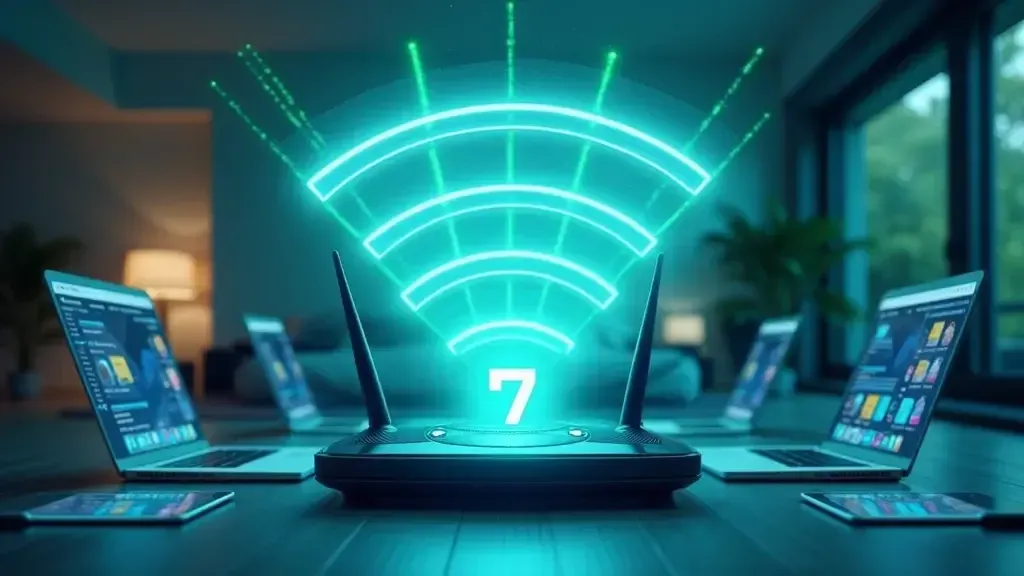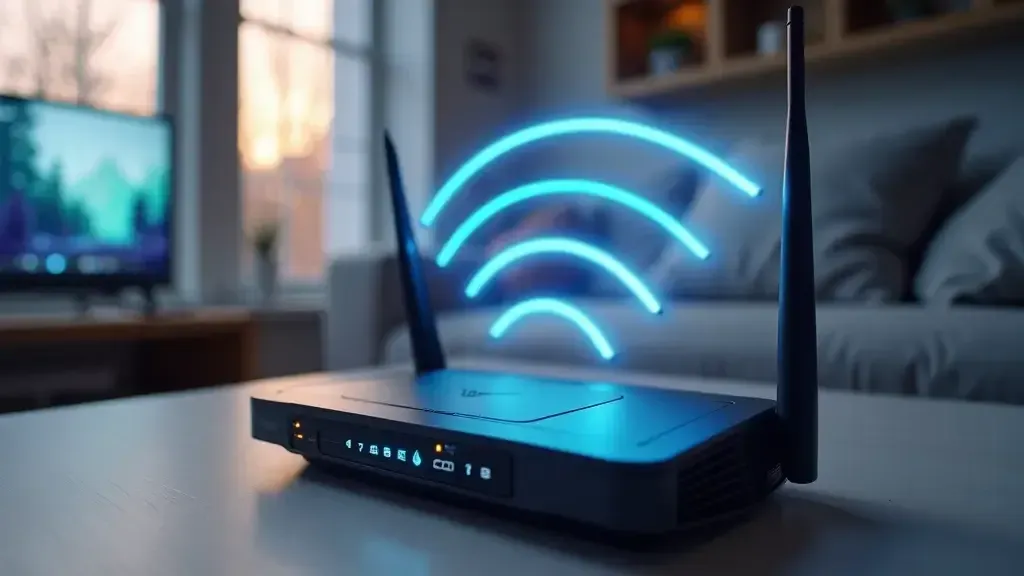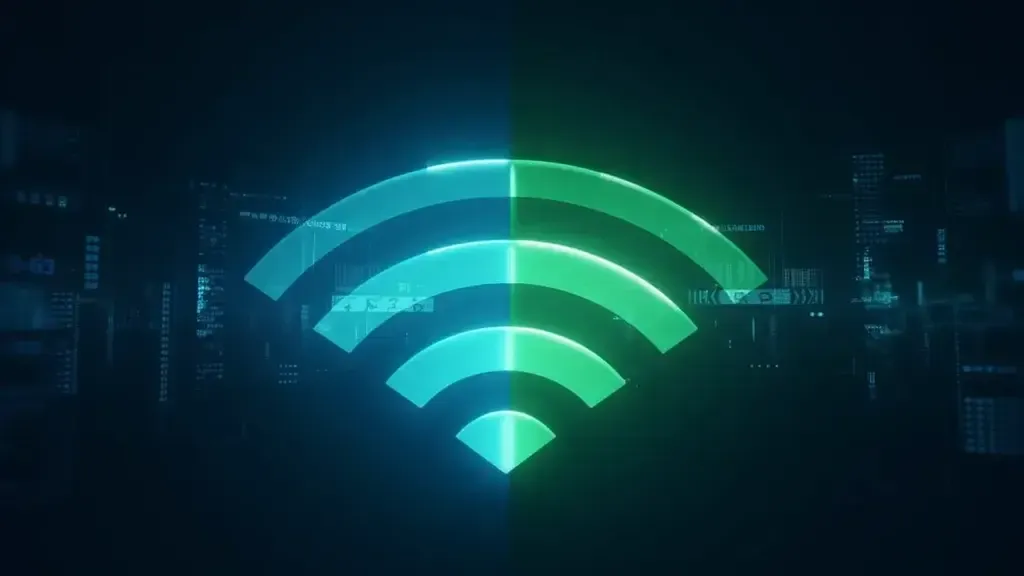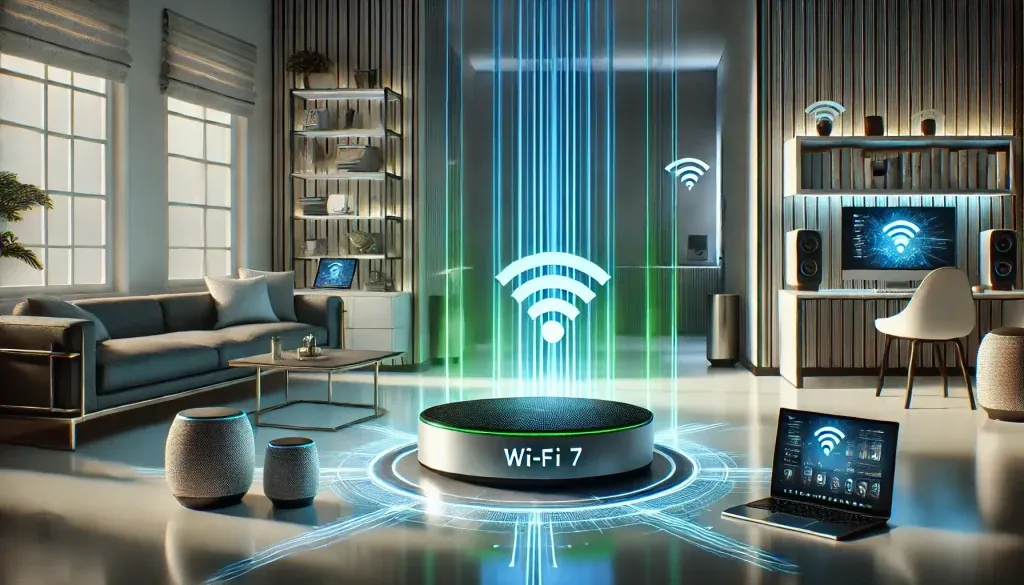Wi-Fi 7 is here, revolutionizing wireless connectivity with its incredible speeds, ultra-low latency, and robust capacity. This next-gen standard supports high-demand tasks—like 8K streaming, VR gaming, and robust business networks—redefining how we access the internet.
But what exactly sets WiFi 7 apart? Let’s dive into its standout features.

What is Wi-Fi 7?
WiFi 7, officially known as 802.11be, is the latest wireless networking standard created by the Wi-Fi Alliance. The design meets the growing need for faster internet and more stable streaming, offering a more stable connection as well. Especially, the top speed in Wi-Fi 7 will almost be four times that of Wi-Fi 6. This next-gen tech will use a single 320-megahertz-wide channel. It will provide higher data capacity.
Additionally, an MLO will improve link stability, and a 4096-QAM data boost will boost data speed. Many see it as one of the most new Wi-Fi upgrades. This is due to our more connected, information-focused world.

Wi-Fi 7 vs Wi-Fi 6: How Much Faster Is Wi-Fi 7?
The differences between Wi-Fi 7 and its predecessor, Wi-Fi 6, are surprising. Here are some:
- Speed: It promises speeds of up to 46 Gbps, which is nearly four times faster than Wi-Fi 6’s top end of about 9.6 Gbps.
- Capacity: With its 320 MHz channel, Wi-Fi 7 will allow more devices to connect for smooth internet.
- Latency: It has a new feature, Multi-Link Operation. It lowers delay by letting data use multiple channels at once. This feature cuts down disruptions and data drops.
As a result, users will enjoy better streaming, faster downloads, and no delay, even in busy offices and crowded, high-demand smart homes.

Why Upgrade to Wi-Fi 7? Top Benefits for Home Users and Businesses
Benefits for individual users and businesses keep growing as Wi-Fi technology evolves. For this reason, here are a few key reasons why upgrading to Wi-Fi 7 can be just the big improvement you’re looking for:
- Ultra-Fast Speeds: Wi-Fi 7 will let users watch 8K video without buffering. It will enable faster downloads and near-instant file openings.
- Low Latency: For gaming and real-time apps, low delay is vital. It gives gamers better gameplay and fewer interruptions.
- Better Device Managing: It lets users manage more devices on the same network in homes and offices without slowdowns.
- Energy Effectiveness: WiFi 7’s enhanced effectiveness will save power and increase battery power.
Ultimately, this means a better experience for home users, as smart TVs and temperature controllers will work more efficiently. Meanwhile, businesses will gain from a stable, high-speed setting. It must run everything from online apps to IoT sensors.
Key Technologies Behind Wi-Fi 7
Several key innovations are at the core of Wi-Fi 7:
- 320 MHz Channels: Unlike Wi-Fi 6, which uses 160 MHz channels, Wi-Fi 7 doubles this width to 320 MHz, allowing higher speeds and improved data movement as we have seen previously.
- Multi-Link Operation: MLO lets devices send data across all channels at once. This greatly improves speed, effectiveness, and lowers delay.
- 4096-QAM: Wi-Fi 7 improves data rates with 4096-QAM, enabling it to send more data per signal and boost capacity.
Also, it has many innovations. They make it faster and more reliable. They improve their speed, too. This is vital for data-demanding apps like AR and cloud computing.
Wi-Fi 7 for Gamers: The Ultimate Wireless Experience

Wi-Fi 7 is, therefore, a dream come true for gamers. Low delay in gaming means that players will almost immediately receive responses to their actions. With the advanced technologies of WiFi 7, a gamer can enjoy:
- Seamless Gameplay: Lower delay means faster response times. This is key for challenging online gaming.
- Enhanced Graphics Streaming: Gamers now have more data capacity. It allows for smooth, high-quality streaming without lag.
- Stable Connections: Multi-Link Operation ensures a stable, reliable connection. It reduces data drop, even during busy hours.
In other words, Wi-Fi 7 will set a new gold level for gamers who seek the best online experience and want freedom from wires.
The Future of Enterprise Networking with Wi-Fi 7 Access Points

As a result of its increased capacity and effectiveness, business settings can greatly benefit from Wi-Fi 7. In business settings, this means:
- Higher Throughput: it 7 supports faster data sends. It enables data-demanding apps like video calls, online computing, and big file sends.
- Improved Network Capacity: A new office must manage many devices without losing speed.
- Centralized Cloud Management: Most Wi-Fi 7 access points support online management. It helps IT admins check, fix problems, and improve networks.
Future WiFi 7 improvements may boost wireless offices. They will support computer-simulated reality, Automation, and Machine Learning.
When Will Wi-Fi 7 Routers Be Available?
The rollout for Wi-Fi 7 routers has already begun, with some manufacturers releasing early models by the end of 2023. Consequently, by mid-2024, Wi-Fi 7 routers should be widely available, with various models serving different budgets and needs. For those looking to upgrade, several top brands will release high-end Wi-Fi 7 routers. They will also create models for home and business use. As always, check that new tech works with existing devices before buying it.
Wi-Fi 7 Compatibility: Will It Work with Your Current Devices?

Yes, Wi-Fi 7 is able to work together and will work with devices using older wireless versions, such as Wi-Fi 5 and Wi-Fi 6. However, to experience all that WiFi 7 has to offer, such as its fastest speeds and very low delay, you will need 802.11be-compatible devices. This doesn’t mean that users must upgrade older devices immediately. Still, to fully use Wi-Fi 7, it’s suggested to overtime consider compatible devices. Connection problems are very small. So, even your older devices can use faster and more stable Wi-Fi 7.
FAQs
Will Wi-Fi 7 improve security for home networks?
Wi-Fi 7 doesn’t add new security protocols. But, most Wi-Fi 7 routers will have advanced WPA3 security. It offers better protection against unauthorized access.
Is Wi-Fi 7 better for outdoor coverage?
Wi-Fi 7’s upgrades focus on speed, capacity, and low latency, not range. Outdoor performance may still rely on existing solutions, such as Wi-Fi extenders or mesh systems.
Can Wi-Fi 7 help reduce network congestion in public places?
Yes, Wi-Fi 7 is ideal for crowded places like cafes, offices, and stadiums. Moreover, it has a higher capacity and better support for multiple devices. It helps maintain fast, stable connections in high-demand settings.
What’s the main difference between Wi-Fi 7 and cellular networks like 5G?
Wi-Fi 7 is for local networks, like in homes or offices. Specifically, it relies on fixed routers. 5G is a mobile network for broader coverage. Each has unique strengths, and the best choice depends on specific connectivity needs. Also, in this article, you will discover how the 5G network is revolutionizing global connectivity compared to 4G.
